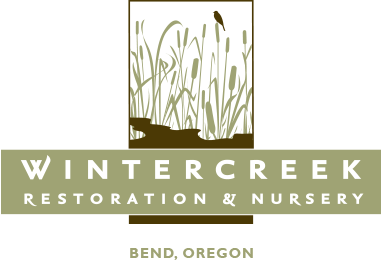High Desert Horticultural Center
The High Desert Horticultural Center (HDHC) was created to provide research and education in resource conservation and the ecology of urban landscapes for the public, industry professionals and future restoration practitioners. We’re working to improve the understanding and knowledge of native plant landscapes in our urban environments.
HDHC focuses on four key issues: Biodiversity, Pollinator Habitat, Resource Conservation and the Human Environment. We address these issues through education, research, workforce development, nursery production and botanical and demonstration gardens.
Click the link at the bottom of the page to get more information from the HDHC website.
Education:
HDHC’s educational programs target industry professionals, students and homeowners looking for practical education and training in the theory and use of native vegetation for design and construction of native plant landscapes, restoration ecology and/or working towards a career in resource management. Programs will expand the understanding, appreciation and acceptance of designs that result in significant resource savings - primarily water and money - and teach maintenance practices critical to those savings. Learn MORE
Research:
A number of academic institutions are completing scientific studies of high desert ecology, but few offer the opportunity to apply results in practical and meaningful ways. The HDHC can complete original research and field test findings in real-world projects, while maintaining the flexibility to modify projects in response to new data. The National Park Service and University Oregon-Cascades are key partners of our research team.
HDHC is unique in its inclusion of urban ecosystems as a field of research. Coinciding with our focus on education, the application of ecological theory and method in developed and managed landscapes is an emerging field in which the HDHC is positioned to become a leader. Learn MORE
Workforce development:
Many agencies and landowners experience difficulty in locating knowledgeable and capable crews with the skills necessary to complete landscape or restoration projects. The High Desert Horticultural Center provides an opportunity for individuals to obtain the skills to become recognized and valued in these rapidly expanding professions.
Students completing our workforce program will be educated in all aspects of restoration horticulture, from design and planning to construction and monitoring. Certification of successful students is accredited by the Society for Ecological Restoration and the Oregon Landscape Contractors Board. This certification provides recognized value to businesses and clients in land management industries. Learn MORE
Nursery production:
One of the challenges associated with designing and planning landscapes for resource conservation, pollinator habitat and efficiency is the availability of plant material. HDHC’s propagation facility will double the availability of native plants to consumers in Central and Eastern Oregon and support a rapidly growing native plant market for homeowners, landscapers, plant brokers and land managers.
The nursery is a full-scale commercial operation offering education opportunities in seed collection and processing, plant production of cold-hardy, waterwise plants to survive in high elevations and harsh, unpredictable climates, and marketing and business management. The nursery serves as a primary economic resource of the Center and operates as a primary interface between the public and HDHC. Learn MORE
Botanic gardens & Visitors center:
The Visitor Center, Botanic and demonstration gardens will be open to the public, fully accessible and representative of the ecology of Central Oregon.
As a community resource serving all residents and visitors to our region, the Visitor Center will provide information and education on the use of native plants, resource efficiency and methods to mitigate the effects of climate change. It will also provide an example of sustainable building through design, stormwater capture and reuse, bioswales, green roofs and sustainable and regenerative landscaping. The ideas and demonstration gardens and systems within the Visitor Center provide models that can be applied universally.
The Visitor Center will also include office space, rooms for classes, lectures, conferences and other educational programs.

